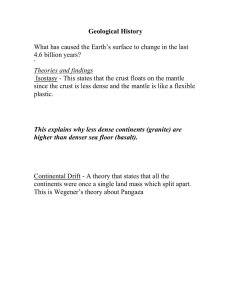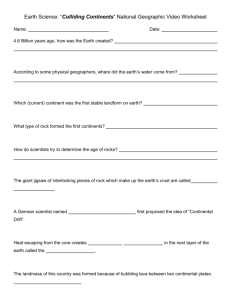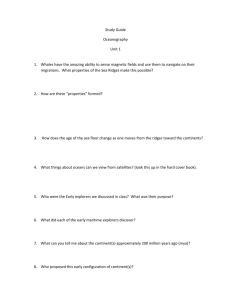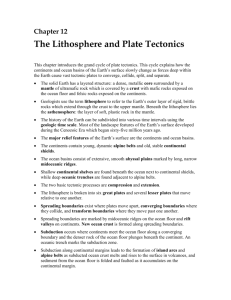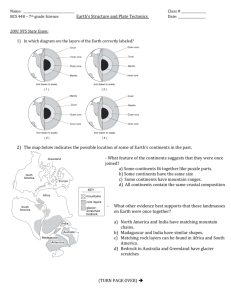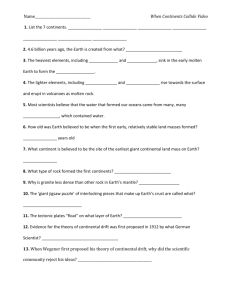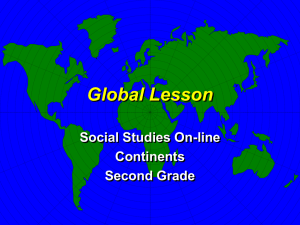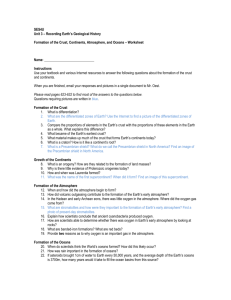How the Earth Was Made (Part 2)
advertisement
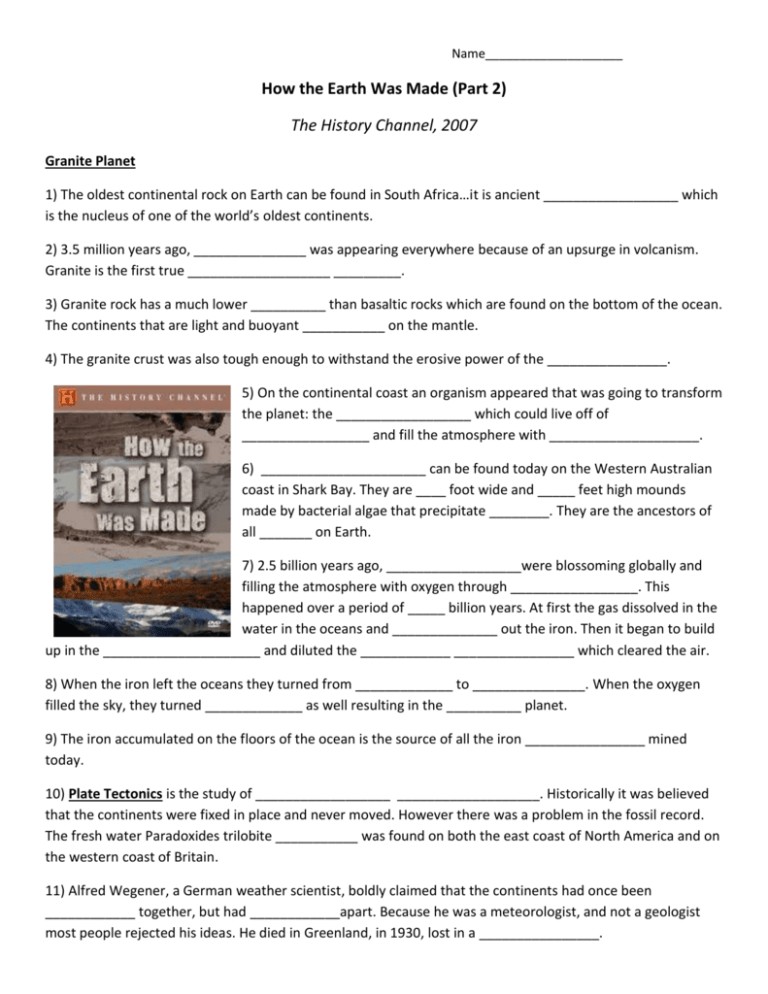
Name____________________ How the Earth Was Made (Part 2) The History Channel, 2007 Granite Planet 1) The oldest continental rock on Earth can be found in South Africa…it is ancient __________________ which is the nucleus of one of the world’s oldest continents. 2) 3.5 million years ago, _______________ was appearing everywhere because of an upsurge in volcanism. Granite is the first true ___________________ _________. 3) Granite rock has a much lower __________ than basaltic rocks which are found on the bottom of the ocean. The continents that are light and buoyant ___________ on the mantle. 4) The granite crust was also tough enough to withstand the erosive power of the ________________. 5) On the continental coast an organism appeared that was going to transform the planet: the __________________ which could live off of _________________ and fill the atmosphere with ____________________. 6) ______________________ can be found today on the Western Australian coast in Shark Bay. They are ____ foot wide and _____ feet high mounds made by bacterial algae that precipitate ________. They are the ancestors of all _______ on Earth. 7) 2.5 billion years ago, __________________were blossoming globally and filling the atmosphere with oxygen through _________________. This happened over a period of _____ billion years. At first the gas dissolved in the water in the oceans and ______________ out the iron. Then it began to build up in the _____________________ and diluted the ____________ ________________ which cleared the air. 8) When the iron left the oceans they turned from _____________ to _______________. When the oxygen filled the sky, they turned _____________ as well resulting in the __________ planet. 9) The iron accumulated on the floors of the ocean is the source of all the iron ________________ mined today. 10) Plate Tectonics is the study of __________________ ___________________. Historically it was believed that the continents were fixed in place and never moved. However there was a problem in the fossil record. The fresh water Paradoxides trilobite ___________ was found on both the east coast of North America and on the western coast of Britain. 11) Alfred Wegener, a German weather scientist, boldly claimed that the continents had once been ____________ together, but had ____________apart. Because he was a meteorologist, and not a geologist most people rejected his ideas. He died in Greenland, in 1930, lost in a ________________. 12) The US Navy produced a global map of the __________ _________ during World War II and revealed one of Earth’s greatest secrets. The maps revealed a fractured network of submarine _____________, volcanic ________ and ____________ that split the oceans into enormous __________ of ____________. 13) Plate Tectonics is driven by the ___________________ of the old and the _______________ of the new. 14) Draw a convection current within the mantle here: 15) Where the currents rise, _________ form creating new ______________ crust within the gap. Where the currents sink back down towards the center of the Earth, old ____________ crust is dragged down with them in a continuous cycle. The oceanic plates drag the __________________ like a conveyor belt. 16) The process of ocean crust creation is present above the water in _________________. Iceland is on a mid-Atlantic ridge. 17) Fissure eruptions are ___________________________ and appear on Iceland. They mark the path of the plate boundaries scaring the rocky landscape with shallow canyons that are very slowly widening Iceland and creating the ____________ ocean. At their base is _____________ crust slowly pushing ___________ and ________________ apart. 18) The rate of continental drift averages _________ cm/year (one inch). Over millions of years, this speed of movement is enough to shift the continents ________________ of miles. 19) The movements of the continents can be tracked back a _________________ years. 20) The supercontinent called ________________ was lifeless and barren. North America and ____________ made up its core.
